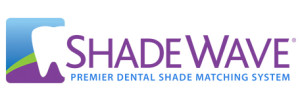shDr. Harker has been a dentist in Southeast Calgary for more than 3 decades. For years Dr. Harker has chosen to use the experts at Aurum as his dental laboratory of choice, sending his patients to the lab for their custom shade needs.
The Problem
As COVID-19 shut down businesses across the country, and social distancing went into effect, Dr. Harker’s patients were no longer able to come into Aurum Calgary’s offices.
Dr. Harker was concerned that without the option for in-person customer shades, he would have to find another laboratory. He needed a way to continue giving his patient’s high-quality results for complex, custom shade cases, without sending them to the lab.
With a long-standing customer’s business on the line, Joana, ceramist at Aurum Calgary offered an effective alternative – ShadeWave Mobile.

